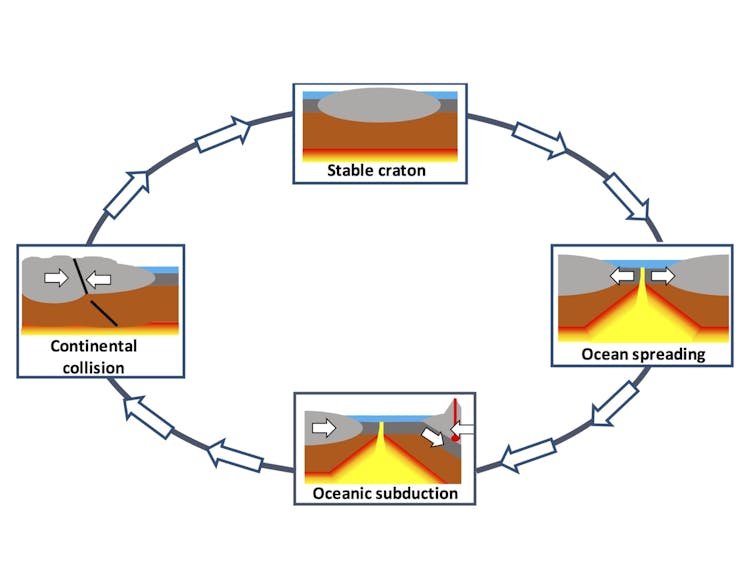It is now almost universally accepted and its adoption represents a true scientific revolution analogous in its consequences to quantum mechanics in physics or. It explains how mountain ranges earthquakes volcanoes shorelines and other features tend to form where the moving plates interact along their boundaries.
Plate Tectonic Theory Plates And Interplate Relationships
Principally it refers to the movement and interaction of the earths lithosphere.

Theory of tectonic plates. Plate boundaries are the edges where two plates meet. This video briefly discusses the Theory of Tectonic Plates the different types of plate boundaries and their surface features. When Alfred Wegener first proposed the theory of continental drift he described the tectonic plates or the continents as puzzle pieces fitting together.
The theory of plate tectonics is based on a broad synthesis of geologic and geophysical data. Plates of lithosphere. Where convection currents converge plates move towards each other plates converge and the plates.
There are around 13 tectonic plates that float around on the asthenosphere the plastic-like layer of Earths mantle. Developed from the 1950s through the 1970s plate tectonics is the modern version of continental drift a theory first proposed by scientist Alfred Wegener in 1912. Those are the plates of the plate tectonic theory actually they are real but non-visible by eyemost of the time Just in case this is is the book.
When Alfred Wegener first proposed the theory of continental drift he described the tectonic plates or the continents as puzzle pieces fitting together. About 3 centimeters per year. Plate Tectonic Theory Plate tectonics is the theory that explains the global distribution of geological phenomena.
Plate Tectonic Theory The outer layers of the Earth are said to be divided into the lithosphere and asthenosphere. Wegener didnt have an explanation for how continents could move around the planet but researchers do now. Geologists know that Wegener was right because the movements of continents explain so much.
Continental Drift and the Development of Plate Tectonic Theory. The division of both the layers which is said to be based on differences in mechanical properties and in the method that is for the transfer of heat. I am not saying its the best book on plate tectonics at all.
Plate tectonics is a theory that studies the structure of those plates and explains how they are constantly gliding over the mantle. He continued to explain his theory after realizing the Earths surface changing significantly over time while noticing that continents which at one point were not separated were. Where convection currents diverge near the Earths crust plates move apart.
Plate tectonics is a scientific theory that explains how major landforms are created as a result of Earths subterranean movements. Plate tectonics thus provides the big picture of geology. The theory which solidified in the 1960s transformed the earth sciences by explaining many phenomena including mountain building events volcanoes and.
These smaller broken plates form a more fluid rock surface in the mantle. The theory of plate tectonics states that the Earths surface the upper mantle and crust was once made up of enormous rock plates that broke into smaller pieces approximately 300 million years ago. Theory of Plate Tectonics Plate Boundaries.
Most geologic activities including volcanoes. In other words the plate tectonics theory explains how the rigid and hard slabs of rock plates move on the underlying mantle and enable scientists to measure the movement of. This is a topic in our books section.
Plate tectonics is a theory that was first proposed in the early 1900s by scientist Alfred Wegener but was not said to be true until the 1960s. Plate tectonics is the theory that Earths crust and upper mantle called the lithosphere is broken up into sections called tectonic plates. These tectonic plates move very gradually.